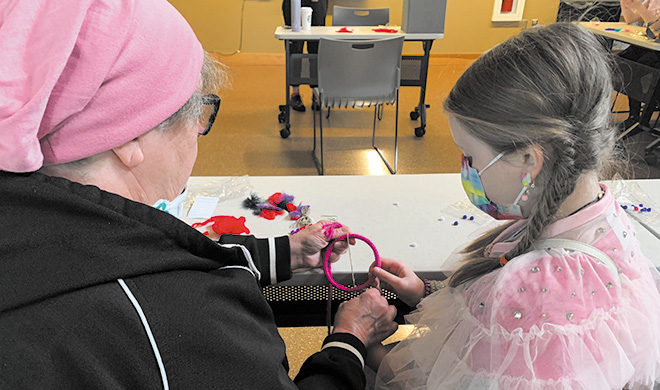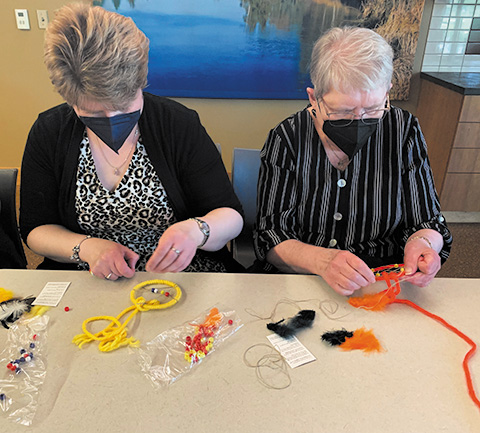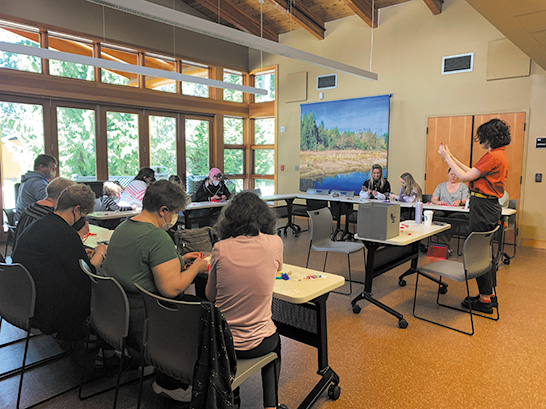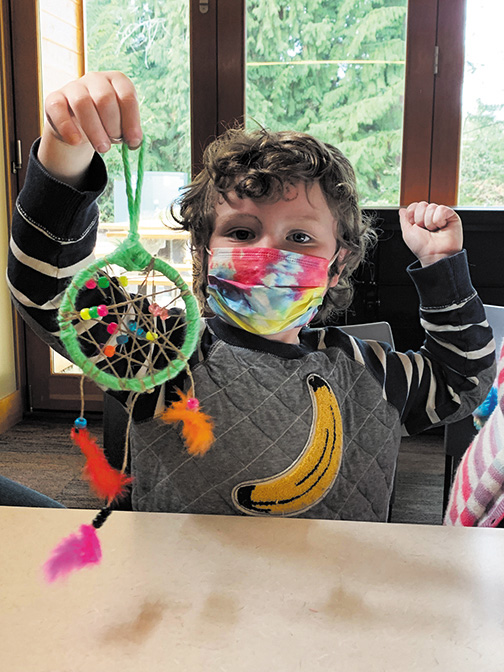
By Shaelyn Hood, Tulalip News
“Dreamcatchers hold power in who we are, the art we have, and the spiritual-ness in Native American culture” proclaimed Braxton Wagner, Hibulb Cultural Center (HCC) assistant.
What was traditionally a sacred item to Native Americans has been commercialized and turned into common displays at décor shops, hanging on key chains, printed on t-shirts or even generic tattoos. Making some people question, do people truly understand the value of dreamcatchers or their origins?
Some Native Americans say that dreamcatchers have been appropriated and offensively exploited by people outside of our community. The best thing we can do to help against this perception is to continue educating ourselves and others outside of our community.
One of the many benefits taken away from participating in Hibulb’s monthly classes is being able to do just that. People within the Tulalip community and general public have the opportunity to learn, and understand our culture, while also utilizing their own crafting skills to generate a piece of Native American art. Such was the case on Wednesday April 6th, when HCC held a kids’ craft for dreamcatcher making.
A Marysville mother and daughter duo who attended said, “The classes are fun. We happened to be taking a tour the first time we came and saw there was a class going on and jumped in! Braxton told us about this dreamcatcher class, and we thought it’d be fun to learn about them, understand the history, and create one. We even brought [my daughter’s] aunt and grandmother this time.”
It is theorized that the dreamcatchers origin is traced back to the Ojibwe tribe. They believed that dreamcatchers were a gift from Asibaikaashi, better known as the Spider Woman. She was a caretaker who looked after the spiritual healing of the people in her tribe, and created dreamcatchers to help protect newborns and encourage good dreams. Dreamcatchers were often made by grandmothers or mothers to hang above cradle boards.
Traditionally, dreamcatchers are handmade of willow and shaped into a small round or tear-shaped frame. Natural fibers go into making the string that forms the “web” inside of it. On the string, people can put beads, seashells, pebbles, and other small, natural items. Attached at the bottom of the dream catcher are more strings or leather holding beads, and feathers.

The small items in the web represent spiders that capture any bad dreams and protect the newborn against any negative energy and spirits. Then the good dreams travel down the attached leather and feathers, descending down onto the baby. Once daylight hit, the bad dreams would dissolve and disappear.
This cultural practice developed quickly across many Native American tribes and became more widely accepted. Over time, the meaning of dreamcatchers deviated from tribe to tribe. For some, it represents hope during a trying time. For others, it represents unity through culture, like the Medicine Wheel. Sometimes even, it represents how the different forces of the world may speak to you.
Braxton spoke of the value of non-Natives attending the HCC interactive classes. “The people that come here are wanting to learn. They want to understand our past and our struggles, and I appreciate the effort they make by coming here,” she said.

These learning opportunities can help mitigate cultural misunderstandings that people may have, while also providing a framework for better cultural appreciation in the next generation.
As American writer and social activist Robert Alan once said, “Intercultural dialogue is the best guarantee of a more peaceful, just and sustainable world.” The possibility for different communities to come together and be educated by Native Americans who are willing to share their ways of life can create better understanding for all.
